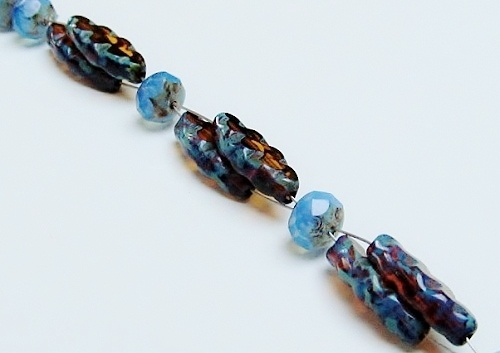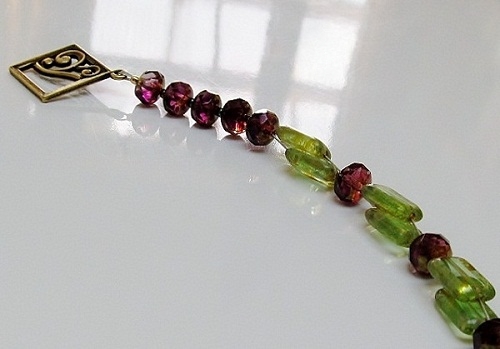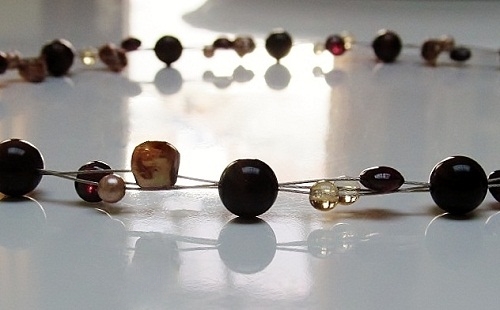Tips and Tricks for NEWBIES - multi-strand necklace with visible wire - part 1 Friday, 27 February 2015
In this necklace the beading wires remain visible and are part of the design. You could also opt for colored wire and work with two or even more threads.
The hardest part:
- attach the wires to the toggle
- evaluate the tension in the wires and keep the wires parallel.
MULTI-STRAND NECKLACE WITH TWO VISIBLE WIRES:
For starters:
- check that the holes of your beads are large enough to thread two wires.
What you need:
- large or medium sized beads
- a toggle clasp
- 2 crimp tubes or crimp beads
- 2 times 70 cm cabled wire
Supplies:
- chain-nose pliers, flush cutters and optionally crimping pliers
- bead board or a soft towel in a neutral color
Instructions:
- with your flush cutter, cut off two beading wires
- attach your clasp and please take your time to do so
- pull the two cabled wires through an end bead, a crimp tube, the eye of the toggle clasp and back through the crimp tube and the bead
- make sure the wires are parallel and do not intersect
- squeeze the crimp tube and cut the excess wire with the flush cutter
- stringing further: you will alternate the thread use each time – that is, two times one bead on one wire and one bead over two wires, two times one bead over one wire and one bead over two wires ...
- in other words: the wires individually and the wires together, the wires individually and the wires together …
- check to see if your wires are still parallel and maintain the chosen beading pattern
- make sure you push your beads far enough so that there is some tension, but not so tight that your work has no flexibility
- give your work symmetry: the beads where the wires converge should be equidistant
- check the length of the necklace and finish by attaching the second part of the clasp: go with both wires through the end bead, a crimp tube, the eye of the toggle clasp and back through the crimp tube and the end bead
- verify if the wires are neatly side by side and squeeze the crimp tube
- cut off the excess wire
SEE - part 2









